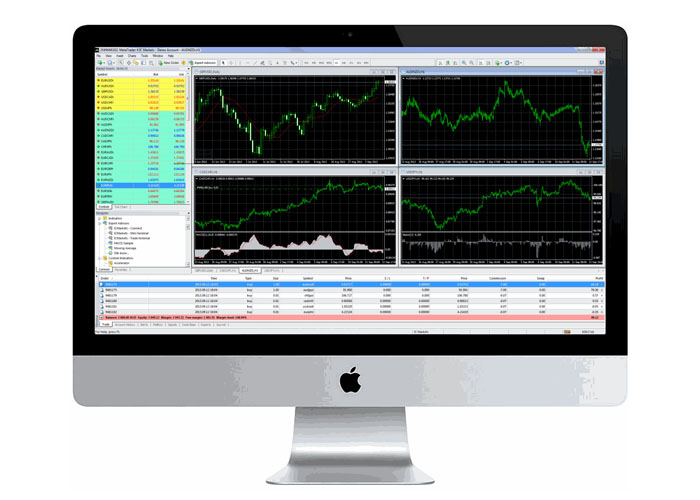Mentioned below are some of the most common terms used in the Forex trading market:
Ask Price
Also known as the Offer Price, Ask Prices are market prices for traders interested in purchasing currencies. Ask Prices are displayed on the right side of a quote, for example, EUR/USD 1.1965/68. This means that you can buy €1 Euro for $1.1965.
Aggressive
Traders and/or price action are acting with conviction.
Analyst
An analyst is a financial expert who has the knowledge and evaluative skills to assess investments and in light of his research, diligently pulls together buy, sell and hold recommendations for his clients.
Appreciation
A product will ‘appreciate’ when it gains strength in terms of price correlating with the total demand in the market.
Arbitrage
The concurrent buying or selling of a financial product to enjoy the benefits of small price differentials in between different markets is known as arbitrage.
Bar Chart
Bar charts are used in the technical analysis of trading in a market. Bar charts consist of time divisions which are shown vertically with the following information: the top of the bar is the price high, the bottom is low price and the horizontal line, which is on the left, indicates the opening price and the horizontal line on the right side indicates the closing price.
Base Currency
Refers to the first currency when you look at a currency pair, a trade quote indicates how much the base currency is worth. For example, in the quote USD/JPY 112.13, the base currency is US dollars with $1 having a worth of 112.13 Japanese Yen.
Bid Price
Bid price is the price at which traders can sell their currencies. The bid price is always indicated on the left side of each quote, for example, EUR/USD 1.1965/68. This means that €1 can be sold for $1.1965.
Bid/Ask Spread
This refers to the difference between the bid price and the ask price pertaining to a currency quotation. The spread indicates the broker’s fee and differs from broker to broker.
Broker
A broker is an intermediary representing both buyers and sellers. Most brokers in the Forex market are linked with well-known financial institutions and make a commission by placing a spread between bid and ask prices.
Big Figure
A big figure refers to the beginning 3 digits of a currency quote, for example 117 USD/JPY or 1.26 in EUR/USD. So, if the price alters by 1.5 big figures it has moved 150 pips.
Candlestick Chart
A candlestick chart is also used for the technical analysis of a trade. Every time the division on the chart is shown as a candlestick, which is basically a red or green vertical bar with extensions which run above and below the body of the candlestick body, the highest point of the extension indicates the highest price for the chart and the bottom extension indicates the lowest price. Red candlesticks indicate a reduced closing price in comparison to the opening price while the green candlestick indicates a rise in the price.
Cross Currency
It is a currency pair which does not have US dollars, for example EUR/GBP.
Currency Pair
Two currencies involved in a FOREX transaction, for example, EUR/USD.
Capitulation
Refers to the point at the end of an intense trade where traders are holding losing positions and exiting. Capitulation is usually a sign that traders expect a reversal soon.
Economic Indicator
An economical indicator is a statistical report published by the government or by the academic institutions, indicating various economic changes, factors and conditions in the economy.
First In, First Out (FIFO)
Refers to open orders liquidated in sequence, for example, the first order liquidated is the first one which will be opened in the market.
Foreign Exchange (Forex, FX)
FX refers to the concurrent buying of one currency and the selling of another.
Fundamental Analysis
It is an analysis of the political and economic conditions of a country which can, in turn, affect the price(s) of different currencies.
Leverage or Margin
The ratio which represents the value of a trading transaction, taking into account the required deposit, the common margin for Forex trading is 100:1, which means you can trade a currency which is worth 100 times more than your deposit.
Limit Order
An order to buy or sell when the price reaches a specified level is known as a limit order.
LOT
The size of a Forex transaction, standard lots are worth about $100,000.
Major Currency
The Euro, German Mark, Swiss Franc, British Pound, and the Japanese Yen are all major currencies.
Minor Currency
The Canadian dollar, the Australian dollar, and the New Zealand dollar are all minor currencies.
One Cancels the Other (OCO)
Two orders placed simultaneously with instructions to cancel the second order upon execution of the first.
Open Position
An active trade which has not been closed is referred to as an ‘Open Position’.
Pips or Points
The smallest unit a currency can be traded in.
Quote Currency
The second currency in a currency pair, for example, in the currency pair USD/EUR, the Euro is the quote currency.
Rollover
Lengthening the settlement time of spot deals to the existing delivery date, rollover costs are calculated using swap points based on interest rate differentials.
Technical Analysis
Analysis of historical market data to predict future movements in the market is referred to as technical analysis.
Tick
The minimum change in price is called a tick.
Transaction Cost
The cost of a Forex transaction, typically the spread between bid and ask prices.
Volatility
A statistical measure indicating the tendency of sharp price movements within a period of time is known as market volatility.
Tradersdna is a leading digital and social media platform for traders and investors. Tradersdna offers premiere resources for trading and investing education, digital resources for personal finance, market analysis and free trading guides. More about TradersDNA Features: What Does It Take to Become an Aggressive Trader? | Everything You Need to Know About White Label Trading Software | Advantages of Automated Forex Trading









































